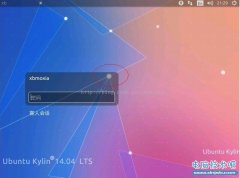Linux man test
发布时间:2014-09-05 14:53:35作者:知识屋
Linux man test
先来看看Linux下对test的解释(使用man test或者info test)
[plain]
TEST(1) FSF TEST(1)
NAME
test - check file types and compare values
SYNOPSIS
test EXPRESSION
[ EXPRESSION ]
test OPTION
DESCRIPTION
Exit with the status determined by EXPRESSION.
--help display this help and exit
--version
output version information and exit
EXPRESSION is true or false and sets exit status. It is one of:
( EXPRESSION )
EXPRESSION is true
! EXPRESSION
EXPRESSION is false
EXPRESSION1 -a EXPRESSION2
EXPRESSION1 -o EXPRESSION2
either EXPRESSION1 or EXPRESSION2 is true
[-n] STRING
the length of STRING is nonzero
-z STRING
the length of STRING is zero
STRING1 = STRING2
the strings are equal
STRING1 != STRING2
the strings are not equal
INTEGER1 -eq INTEGER2
INTEGER1 is equal to INTEGER2
INTEGER1 -ge INTEGER2
INTEGER1 is greater than or equal to INTEGER2
INTEGER1 -gt INTEGER2
INTEGER1 is greater than INTEGER2
INTEGER1 -le INTEGER2
INTEGER1 is less than or equal to INTEGER2
INTEGER1 -lt INTEGER2
INTEGER1 is less than INTEGER2
INTEGER1 -ne INTEGER2
INTEGER1 is not equal to INTEGER2
FILE1 -ef FILE2
FILE1 and FILE2 have the same device and inode numbers
FILE1 -nt FILE2
FILE1 is newer (modification date) than FILE2
FILE1 -ot FILE2
FILE1 is older than FILE2
-b FILE
FILE exists and is block special
-c FILE
FILE exists and is character special
-d FILE
FILE exists and is a directory
-e FILE
FILE exists
-f FILE
FILE exists and is a regular file
-g FILE
FILE exists and is set-group-ID
-h FILE
FILE exists and is a symbolic link (same as -L)
-G FILE
FILE exists and is owned by the effective group ID
-k FILE
FILE exists and has its sticky bit set
-L FILE
FILE exists and is a symbolic link (same as -h)
-O FILE
FILE exists and is owned by the effective user ID
-p FILE
FILE exists and is a named pipe
-r FILE
FILE exists and is readable
-s FILE
FILE exists and has a size greater than zero
-S FILE
FILE exists and is a socket
-t [FD]
file descriptor FD (stdout by default) is opened on a terminal
-u FILE
FILE exists and its set-user-ID bit is set
-w FILE
FILE exists and is writable
-x FILE
FILE exists and is executable
Beware that parentheses need to be escaped (e.g., by backslashes) for
shells. INTEGER may also be -l STRING, which evaluates to the length
of STRING.
AUTHOR
Written by FIXME: ksb and mjb.
REPORTING BUGS
Report bugs to <bug-coreutils@gnu.org>.
COPYRIGHT
Copyright (C) 2002 Free Software Foundation, Inc.
This is free software; see the source for copying conditions. There is
NO warranty; not even for MERCHANTABILITY or FITNESS FOR A PARTICULAR
PURPOSE.
SEE ALSO
The full documentation for test is maintained as a Texinfo manual. If
the info and test programs are properly installed at your site, the
command
info test
should give you access to the complete manual.
GNU coreutils 4.5.3 February 2003 TEST(1)
再看两个简单的例子:
[plain]
#示例一
#!/bin/bash
#iftest2
echo -n "Enter your name:"
read NAME
#did the user just hit return
if [ "$NAME" == "" ];
then
echo "You did not enter any infomation"
else
echo "Your name is ${NAME}"
#示例二
#!/bin/bash
#ifelif
echo -n "Enter your name:"
read NAME
if [ -z $NAME ] || [ "$NAME" = "" ];
then
echo "You did not enter a name."
elif [ "$NAME" = "root" ];
then
echo "Hello root"
elif [ "$NAME" = "chinaitlab" ];
then
echo "Hello chinaitlab"
else
echo "You are not root or wgb,but hi,$NAME"
fi
小技巧:
1.Linux对Shell的要求很严格,不要把代码洁癖(比如定义变量的空格、if、while等等中为了美观留下的空格)带到Linux Shell编程中,稍不注意就会报错;
2.多用man或者info,会收到意想不到的收获。
(免责声明:文章内容如涉及作品内容、版权和其它问题,请及时与我们联系,我们将在第一时间删除内容,文章内容仅供参考)
相关知识
-

linux一键安装web环境全攻略 在linux系统中怎么一键安装web环境方法
-

Linux网络基本网络配置方法介绍 如何配置Linux系统的网络方法
-
Linux下DNS服务器搭建详解 Linux下搭建DNS服务器和配置文件
-
对Linux进行详细的性能监控的方法 Linux 系统性能监控命令详解
-
linux系统root密码忘了怎么办 linux忘记root密码后找回密码的方法
-
Linux基本命令有哪些 Linux系统常用操作命令有哪些
-
Linux必学的网络操作命令 linux网络操作相关命令汇总
-

linux系统从入侵到提权的详细过程 linux入侵提权服务器方法技巧
-

linux系统怎么用命令切换用户登录 Linux切换用户的命令是什么
-
在linux中添加普通新用户登录 如何在Linux中添加一个新的用户
软件推荐
更多 >-
1
 专为国人订制!Linux Deepin新版发布
专为国人订制!Linux Deepin新版发布2012-07-10
-
2
CentOS 6.3安装(详细图解教程)
-
3
Linux怎么查看网卡驱动?Linux下查看网卡的驱动程序
-
4
centos修改主机名命令
-
5
Ubuntu或UbuntuKyKin14.04Unity桌面风格与Gnome桌面风格的切换
-
6
FEDORA 17中设置TIGERVNC远程访问
-
7
StartOS 5.0相关介绍,新型的Linux系统!
-
8
解决vSphere Client登录linux版vCenter失败
-
9
LINUX最新提权 Exploits Linux Kernel <= 2.6.37
-
10
nginx在网站中的7层转发功能
























